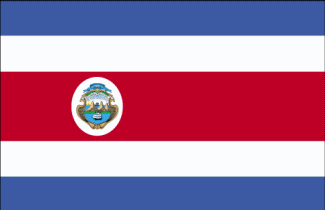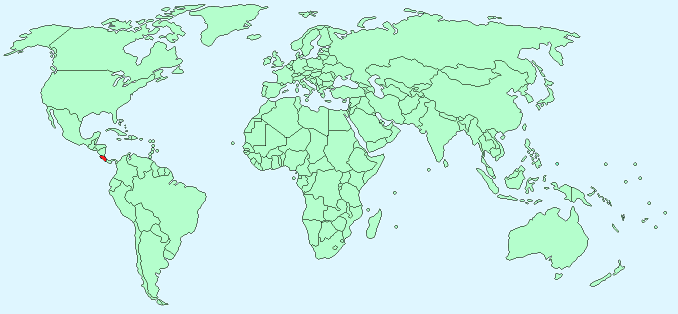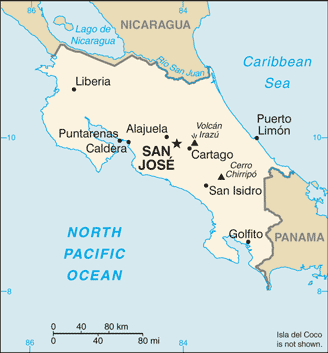Costa Rica


Continent – North America
Region – Central America
Size – 51,100 km²
Geography – coastal plains, central mountains and volcanoes
Language – Spanish, English
Religion – 76% Catholic, 14% Evangelical, 1% Protestant, 1% Jehovah’s witness, 4% other Christian, 4% none
Monetary Unit – Costa Rican Colon
Natural Resources – hydropower
Agriculture – bananas, pineapples, coffee, melons, ornamental plants, sugar, corn, rice, beans, potatoes; beef; timber
Industry – microprocessors, food processing, medical equipment, textiles and clothing, construction materials, fertilizer, plastic products

Neighbouring Countries – Nicaragua, Panama
Population – 4,755,234 (2014 estimate)
Population Growth Rate – 1.41%
Average Life Expectancy – 77.2
Capital City – San Jose (288,054)
Highest Mountain – Cerro Chirripo (3,810 m)
Longest River – no major rivers
Climate – Tropical, hot in coastal regions 22°C to 31°C cooler in the mountain regions 14°C to 27°C
Yearly Rainfall – coastal regions 170 cm (approx) mostly May to November, mountain regions 180cm (approx) mostly May to October
Plant Life – tropical forests and savannas, oak, chaparral, subandean and subalpine flora in mountains, balsa, mahogany, laurel, campana, cedar, orchids
Animal Life – jaguar, deer, puma, monkeys, snakes, frogs
Bird Life – 600 bird species
Harvard Reference for this page:
Heather Y Wheeler. (2015). Costa Rica. Available: https://www.naturalhistoryonthenet.com/Facts_Figures/Country_Facts/costa_rica.htm. Last accessed Monday, July 18, 2016
Facts and Figures Pages
